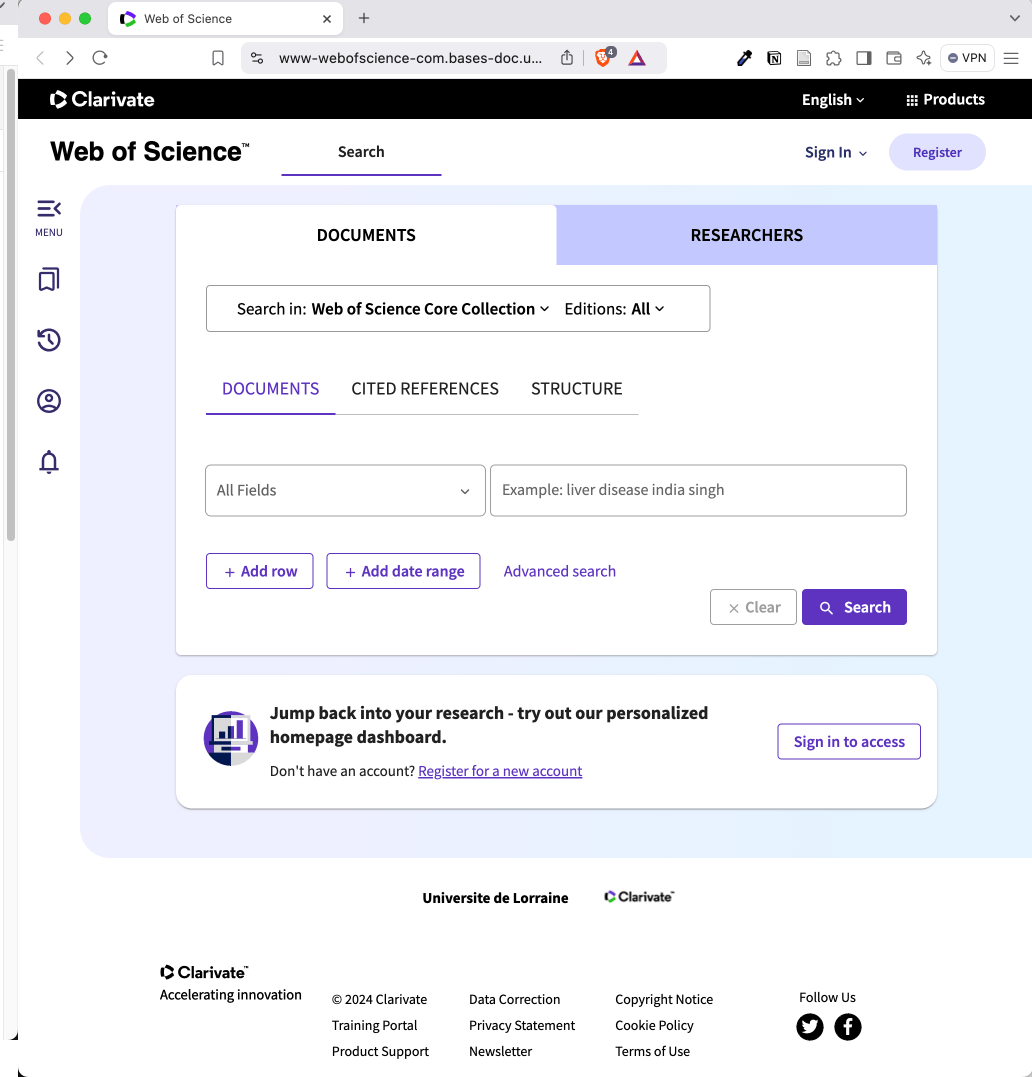45:00
Introduction to Bibliometric Analysis: Research Landscape using VOSviewer
TD 1: Vosviewer
Université de Lorraine | ENSGSI
December 8, 2025
Presentation of TD
Pedagogical goal
- 🧠 Knowledge :
- Understand the structure of the scientific articles and databases.
- 🔨 Know-how :
- Search on pertinent scientific databases as WoS and OpenAlex.
- Identify a pertinent bibliography regarding a subject.
- Search on pertinent scientific databases as WoS and OpenAlex.
- ✍Competence :
- Be able to make a bibliometric analysis of set of documents from a research question.
The Exercises
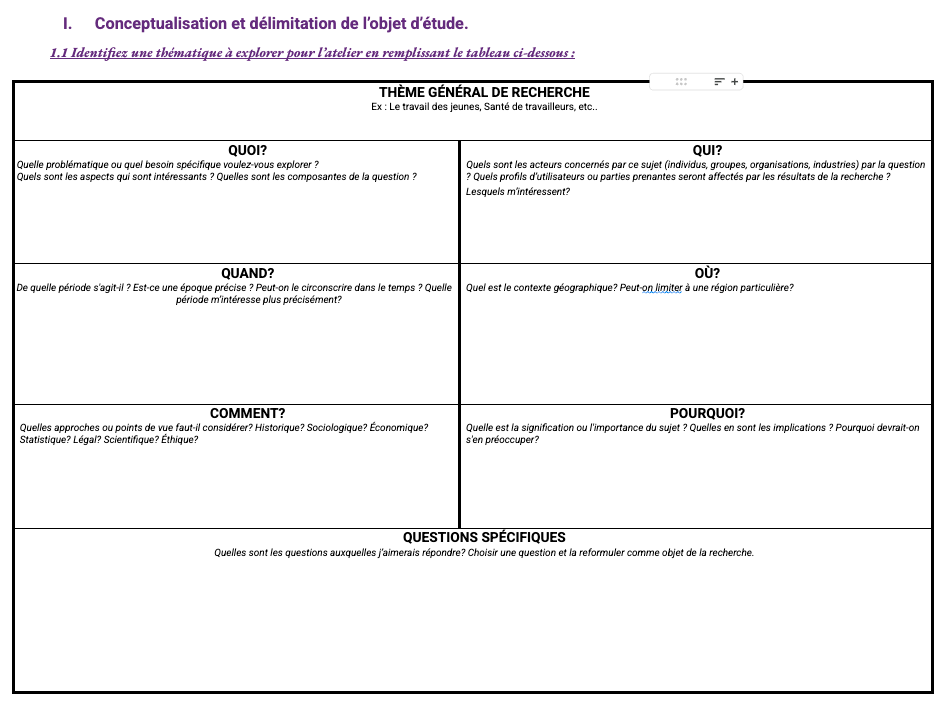
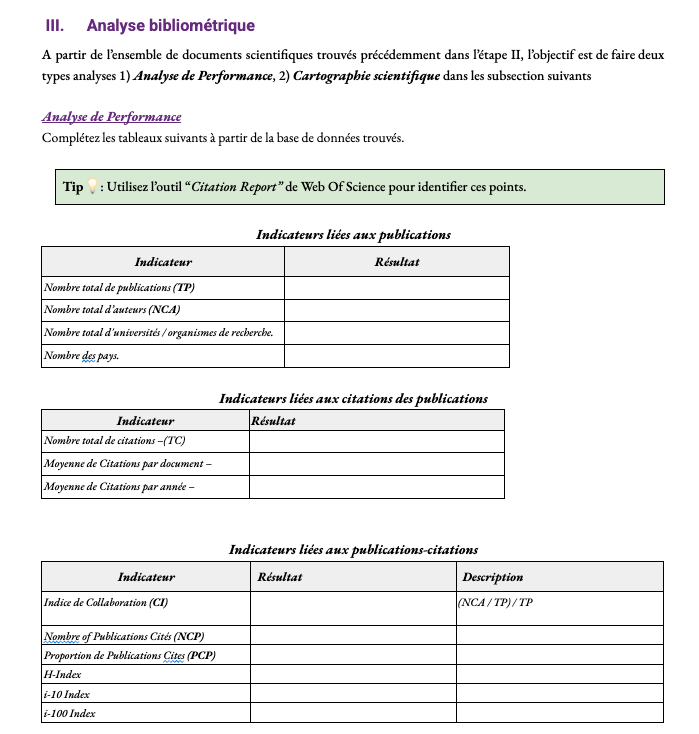
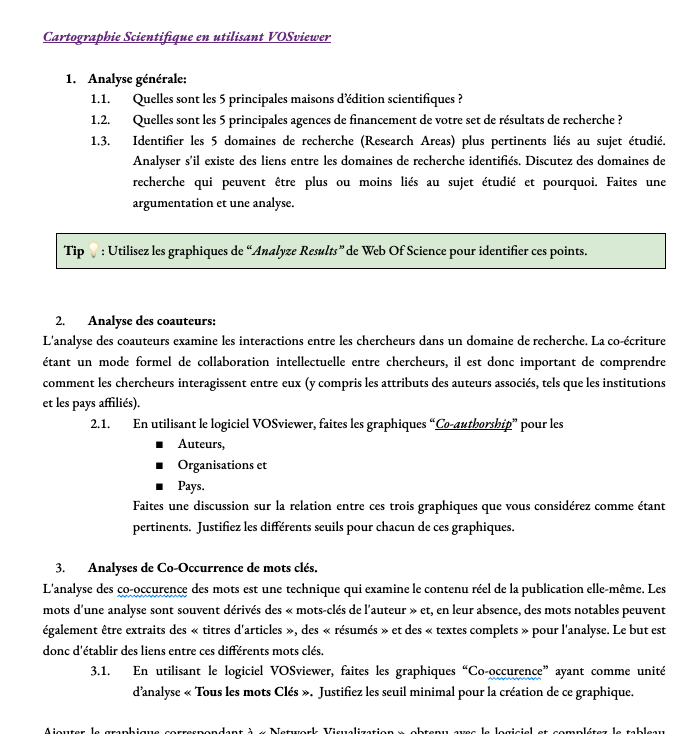
Step 1: Research conceptualization

🎯 Goal:
- Based on the canvas, Identify a research question from a general topic that you want to study.
- Define two or three specific research topics that complete the general research question.
Step 2: Scientific screening

🎯 Goal:
- Structurer a replicable search equation based on the structuration of the ‘Venn Diagram’ approach.
- Go to Scientific databases Web of Science and OpenAlex to select the pertinent
45:00
Step 3: Scientific and Patent Landscapes

🎯 Goal: Create a detailed description and facilitate a discussion on the visualizations generated by VOSviewer.
- Focus on interpreting how the clusters identified relate to the research question.
- Examine key patterns and connections.
- Uncover insights into the relationships among concepts and themes.
- Make a description enhancing the understanding of the research landscape.
45:00
Scientific databases:
Web Of Science (WoS) and OpenAlex
Web Of Science (WoS)
- WoS indexes a wide range of academic publications → peer-reviewed journals, conference proceedings, patents…
- Citation Tracking → 📈
- Research Analytics → 🏛️🌍
- Curated Content → 📋 Minimal Criteria of indexation
- Interdisciplinary Reach → ⚙️Engineering to 👥 Social Sciences
- Developed by Clarivate → 🔒💰
OpenAlex
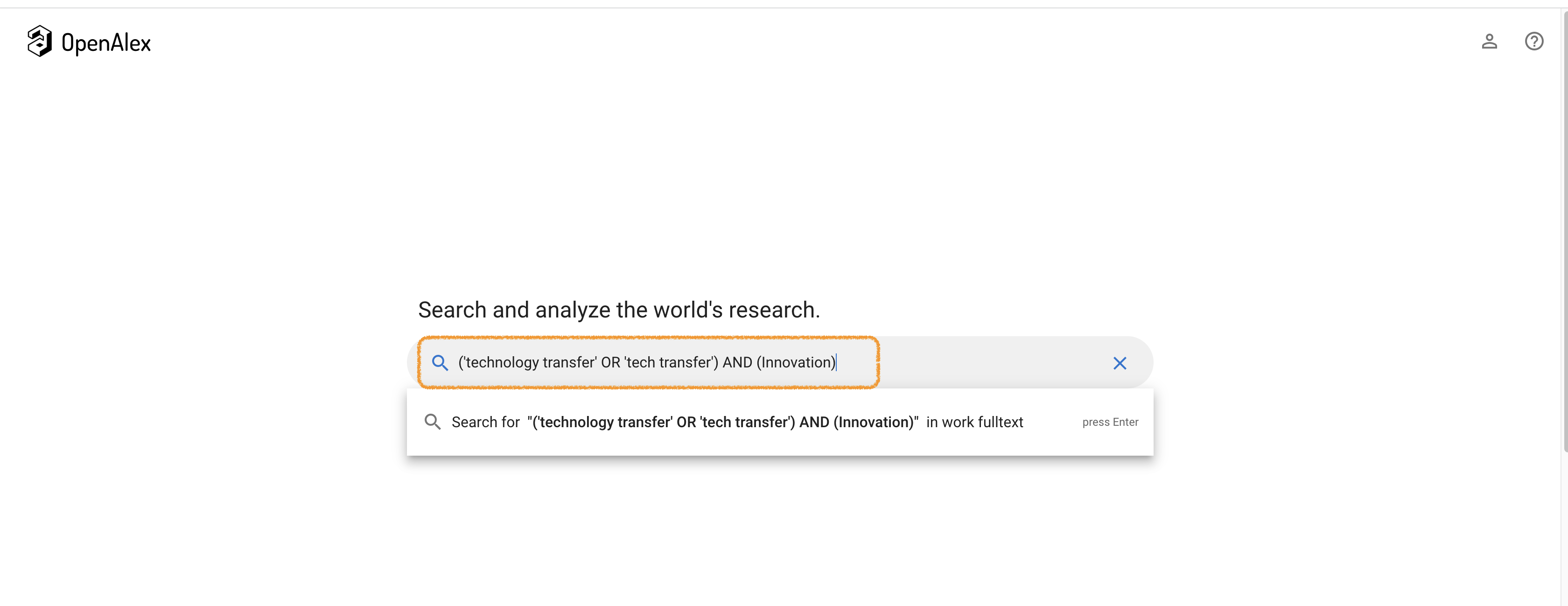
- OpenAlex indexes a wide range of academic publications → peer-reviewed journals, conference proceedings.
- Developed by OurResearch → Open Source Science 🔓
Offers a replacement for industry-standard scientific knowledge bases like Elsevier’s Scopus and Clarivate’s Web of Science ❗
Bibliometric mapping: Vosviewer

VOSviewer
Functions of VosViewer:
- Create maps based on network data.
- Visualize and explore the maps.

Scientific reference
Van Eck, N.J., Waltman, L., 2010. Software survey: VOSviewer, a computer program for bibliometric mapping. Scientometrics 84, 523–538. https://doi.org/10.1007/s11192-009-0146-3
VOSviewer: Terminology
- Maps are created by items
- Items are object of interest → 📚Publications, 👩🏻🔬👨🏻🔬Researchers or 🔤Terms
- Links are the relations between two items.
- Each link has a Strength → Positive number. The higher, the stronger.
For instance:- Bibliographic coupling : Number of cited references two publications have in common.
- Co-authorship: number of publications that two researches have co-authored.
- Co-occurence: Number of publications in which two terms occur together.
- Each link has a Strength → Positive number. The higher, the stronger.
- Clusters are a group of items
Tutorials
List of tutorials
Access to WoS database
WoS database → Connect to the UL ENT
Use your UL account to access to the databases

WoS database → Access to the ‘Ressources en Ligne’

WoS database → UL Web of Science

Tutorials
Web of Science Interface
Simple research mode

Web of Science: Go for a Advance research

Web of Science: Add you search query
Remember the: Topic + Subject + Problem

Web of Science: Advance search
But, take a look of the other type of searches

Web of Science: put the Search Equation

Tutorials
Results on WoS plateform

Analyze the Results

Analyze the Categories

Analyze the Authors

Analyze the Funding Agencies

Analyze the Countries

Tutorials
Web of Science: Export results
Export > Select Tab Deliminted File
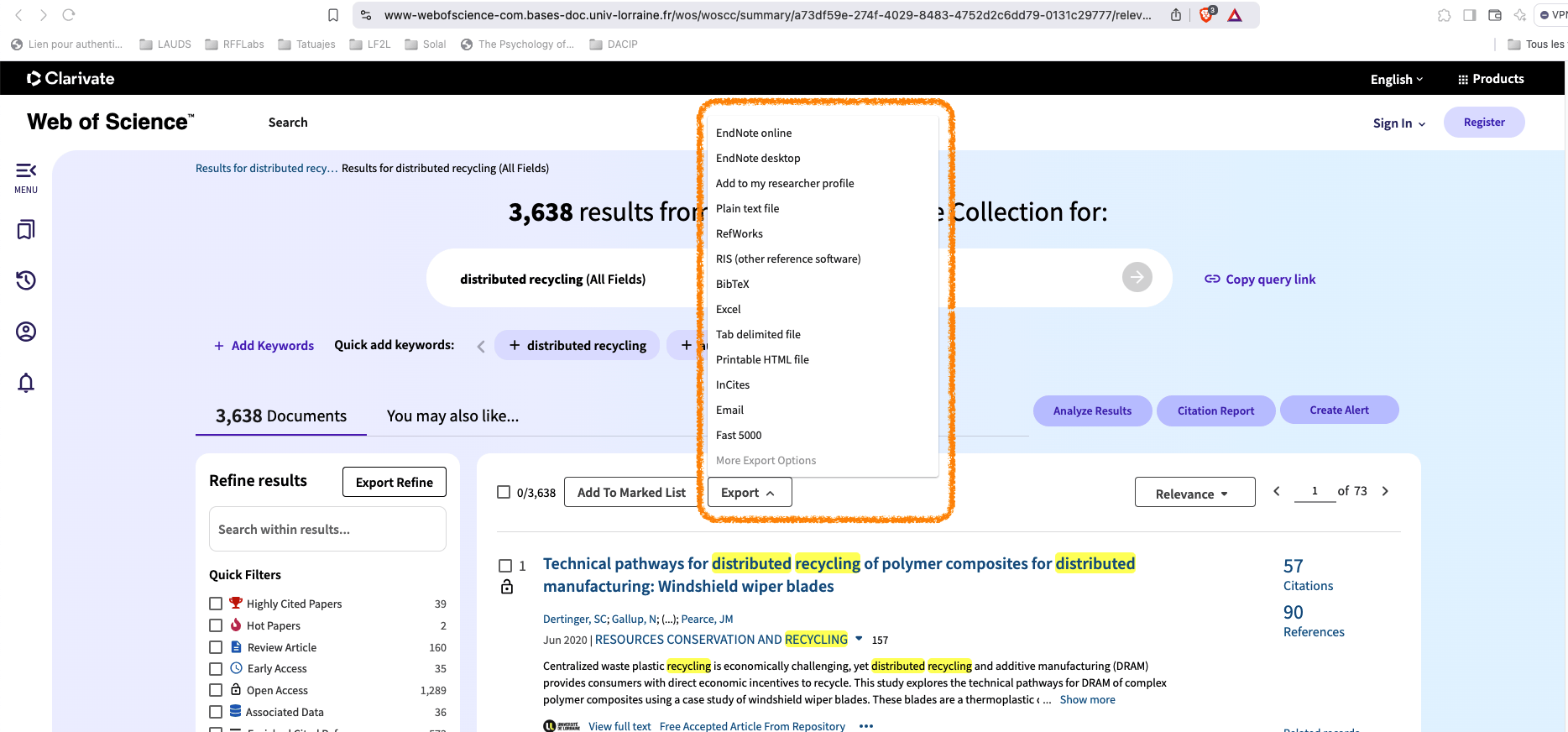
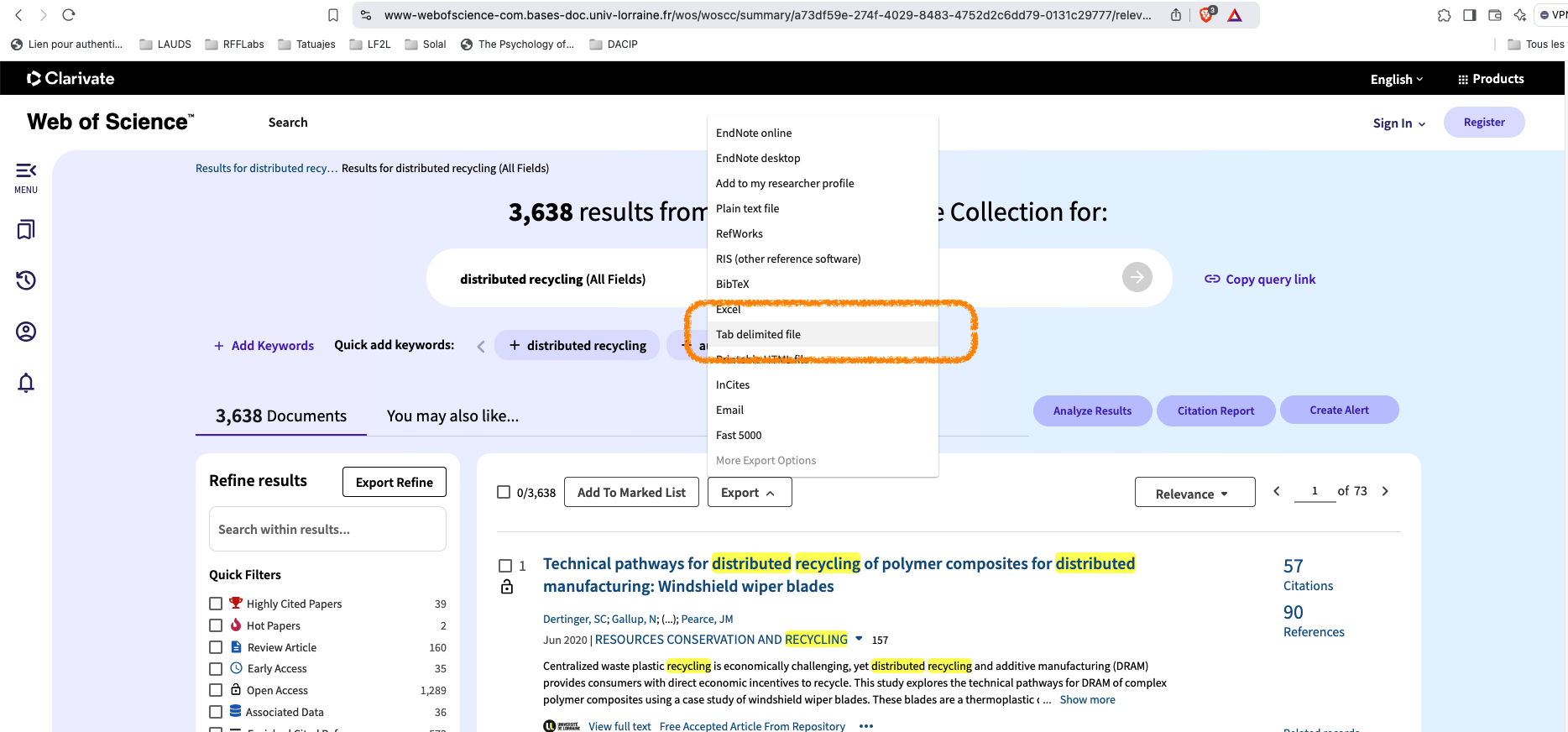
WoS: Export results
Select Custom Selection
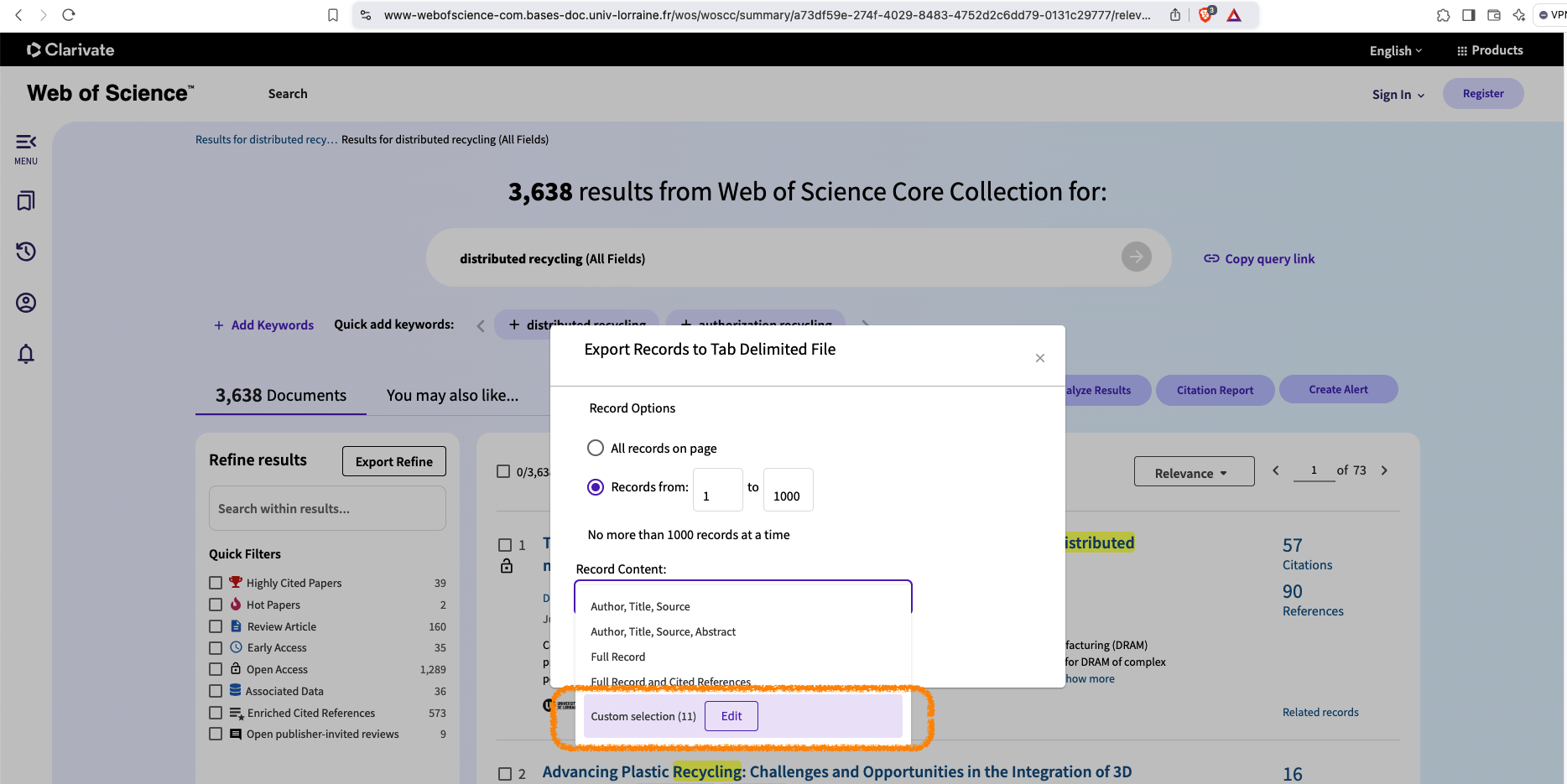
WoS: Export results
Select All Items
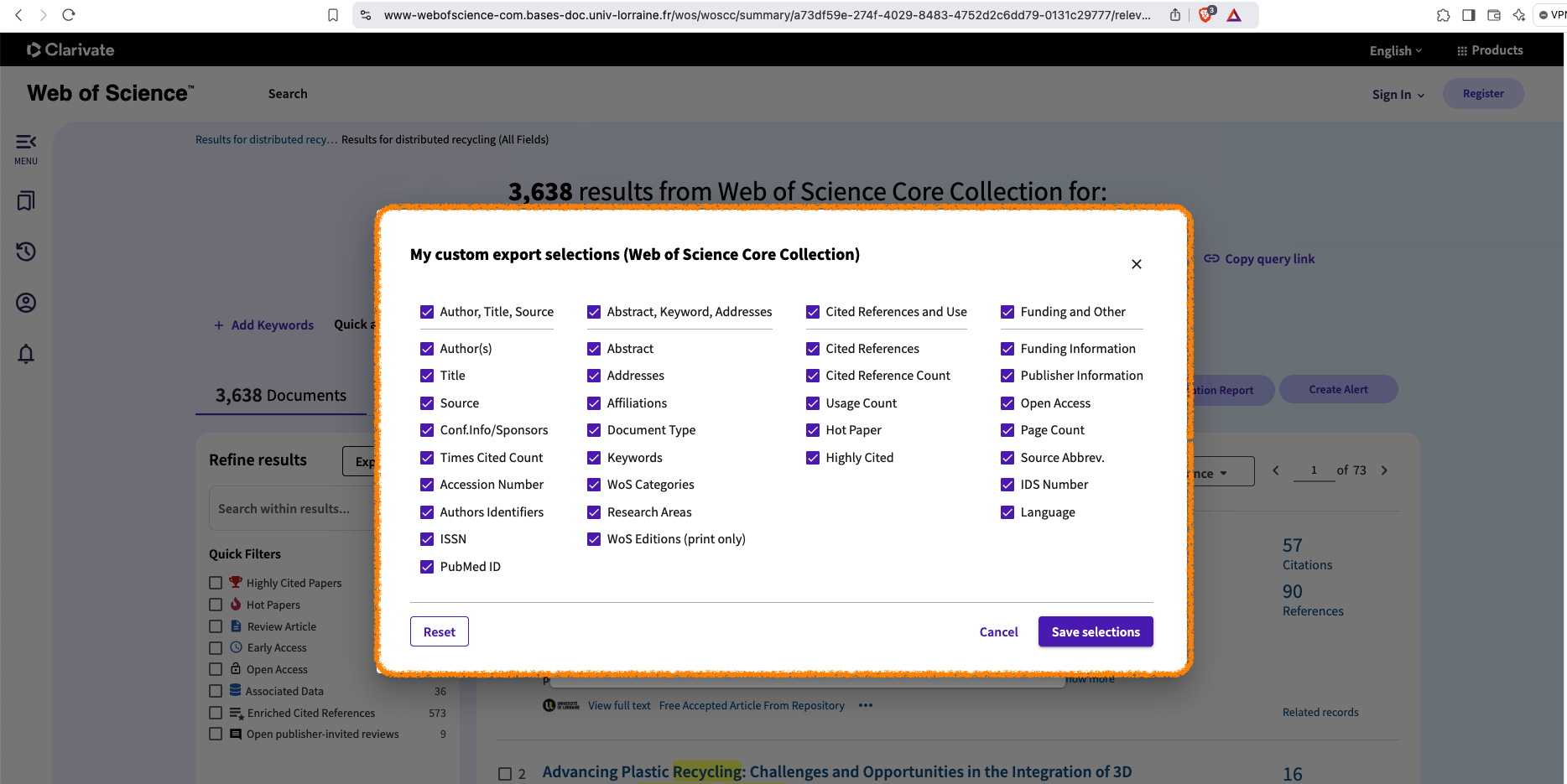
WoS: Export results
Export & Download
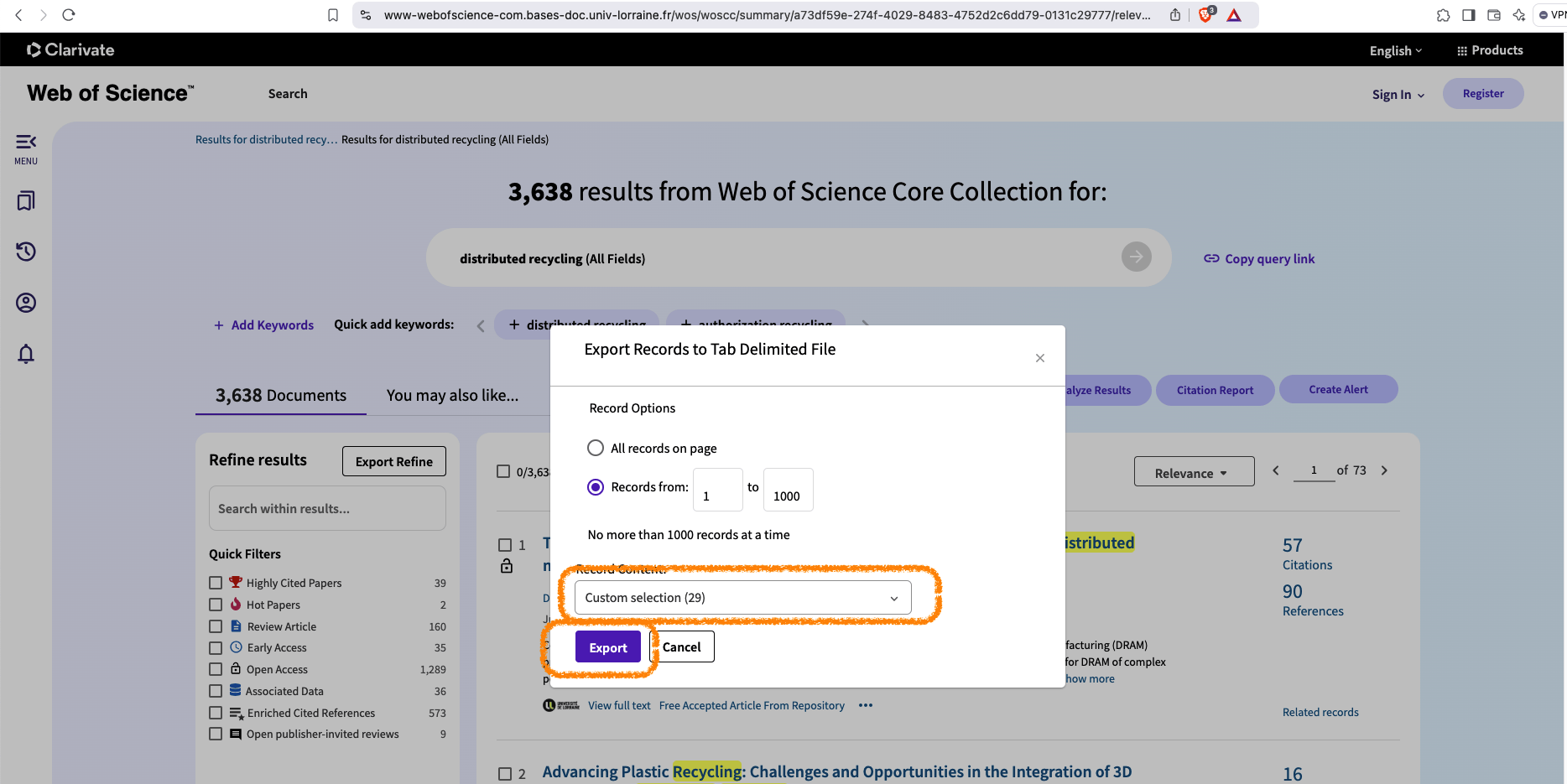
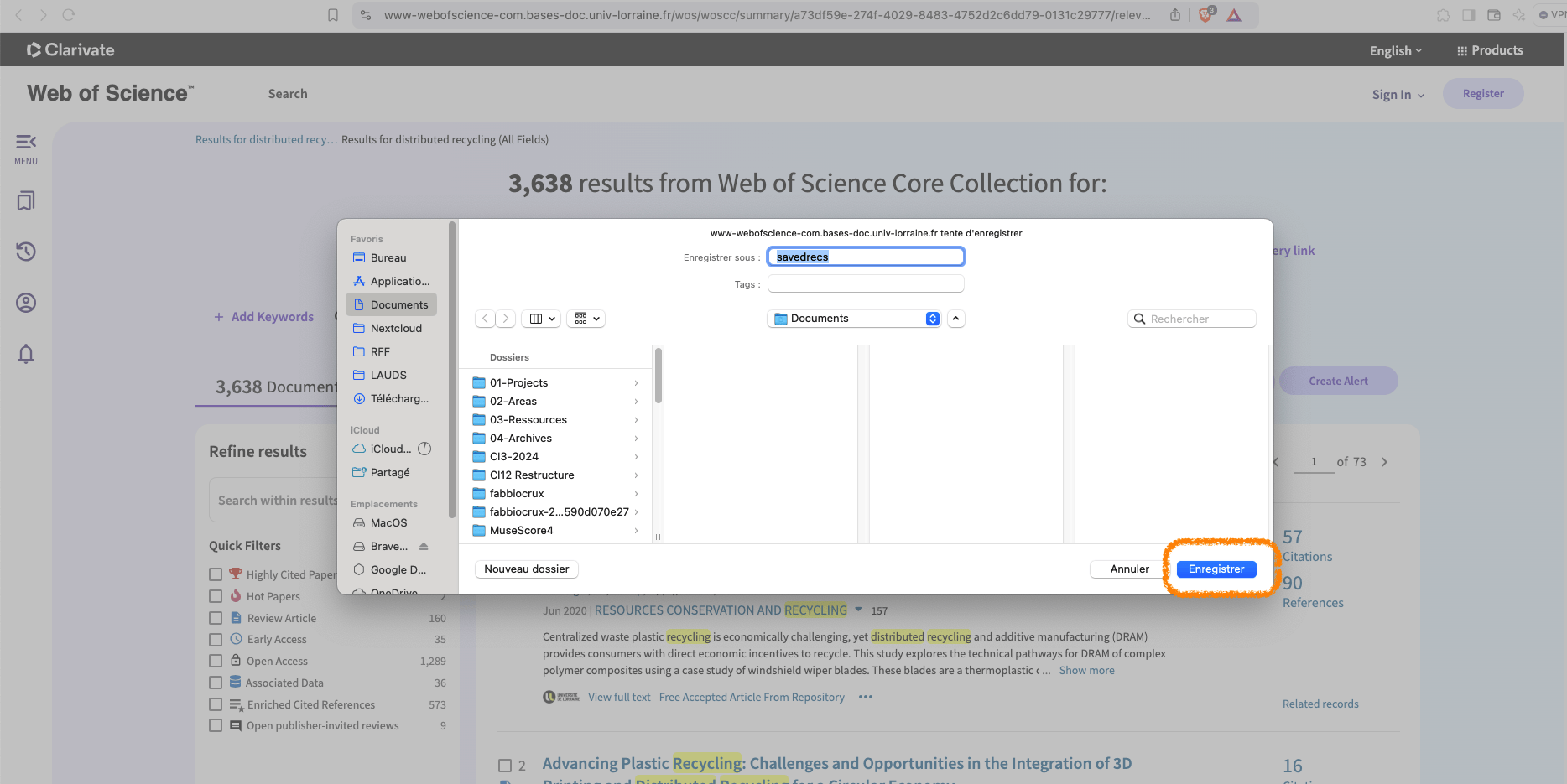
Tutorials
OpenAlex
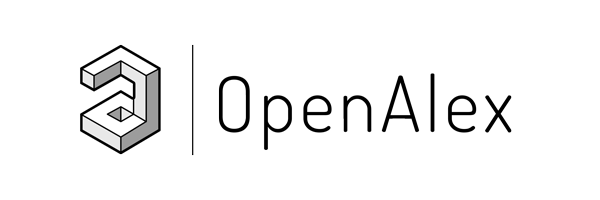
Entities in OpenAlex
OpenAlex will identify these metadata:
- Works → Articles, Conferences, Books.
- Authors → Names, Institutions
- Institutions → Name, location..
- Funding → APC
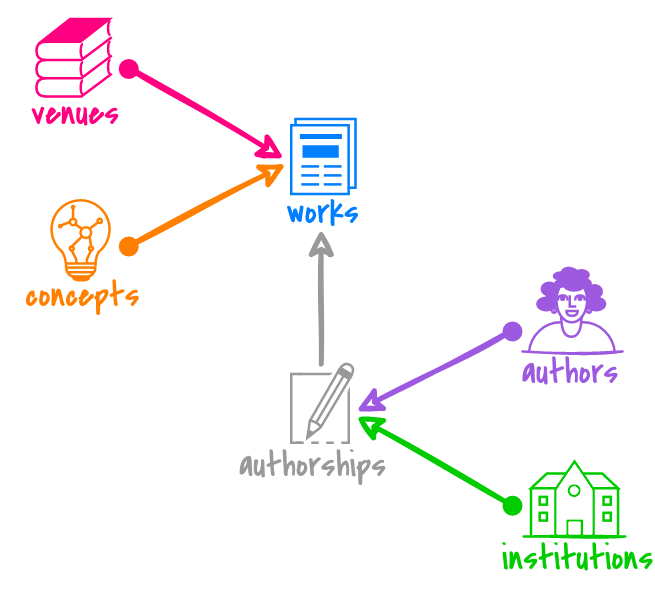
The idea is to obtain the metadata of the scientific documentation.
Metadata on OpenAlex
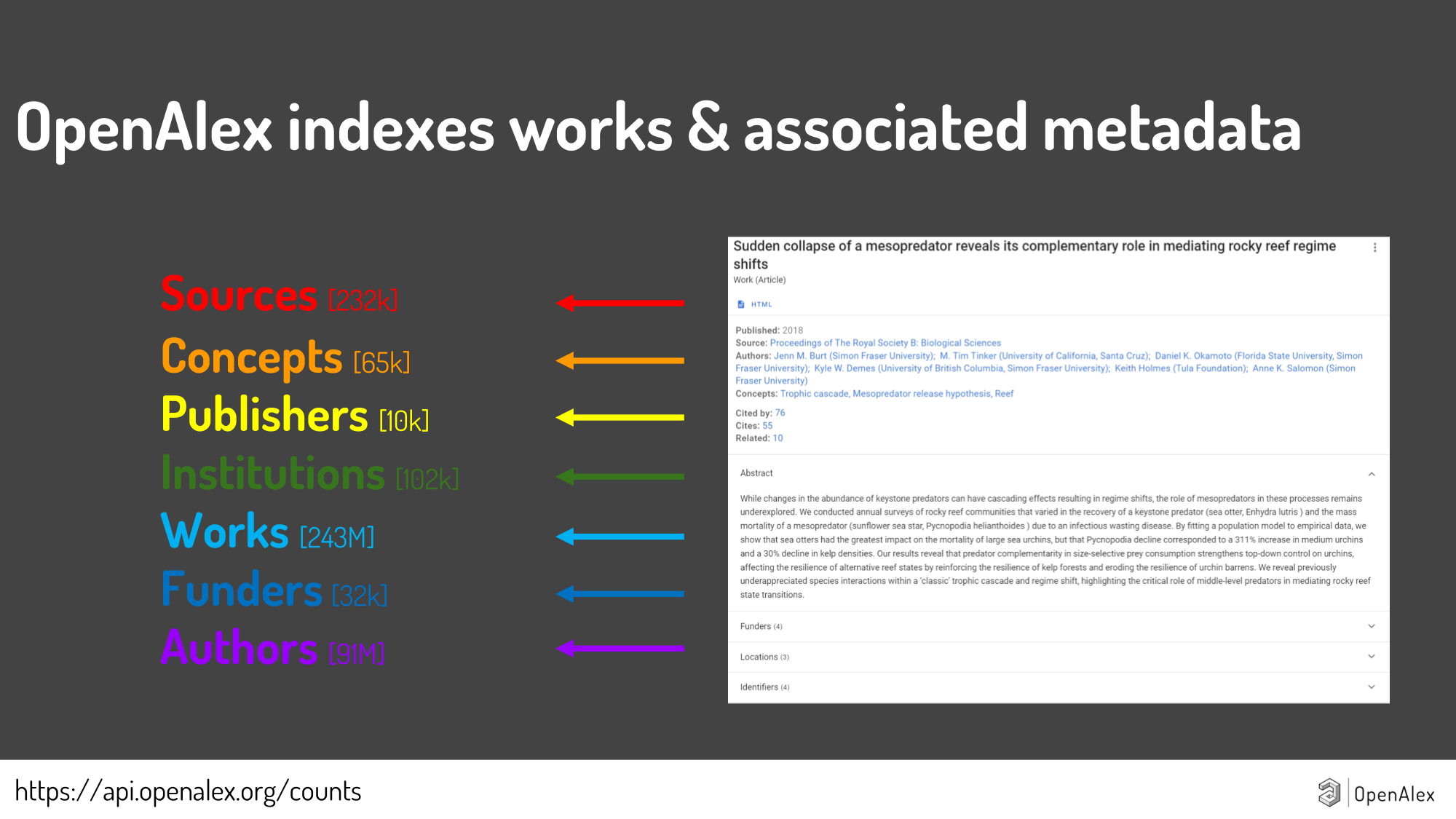
Metadata on OpenAlex
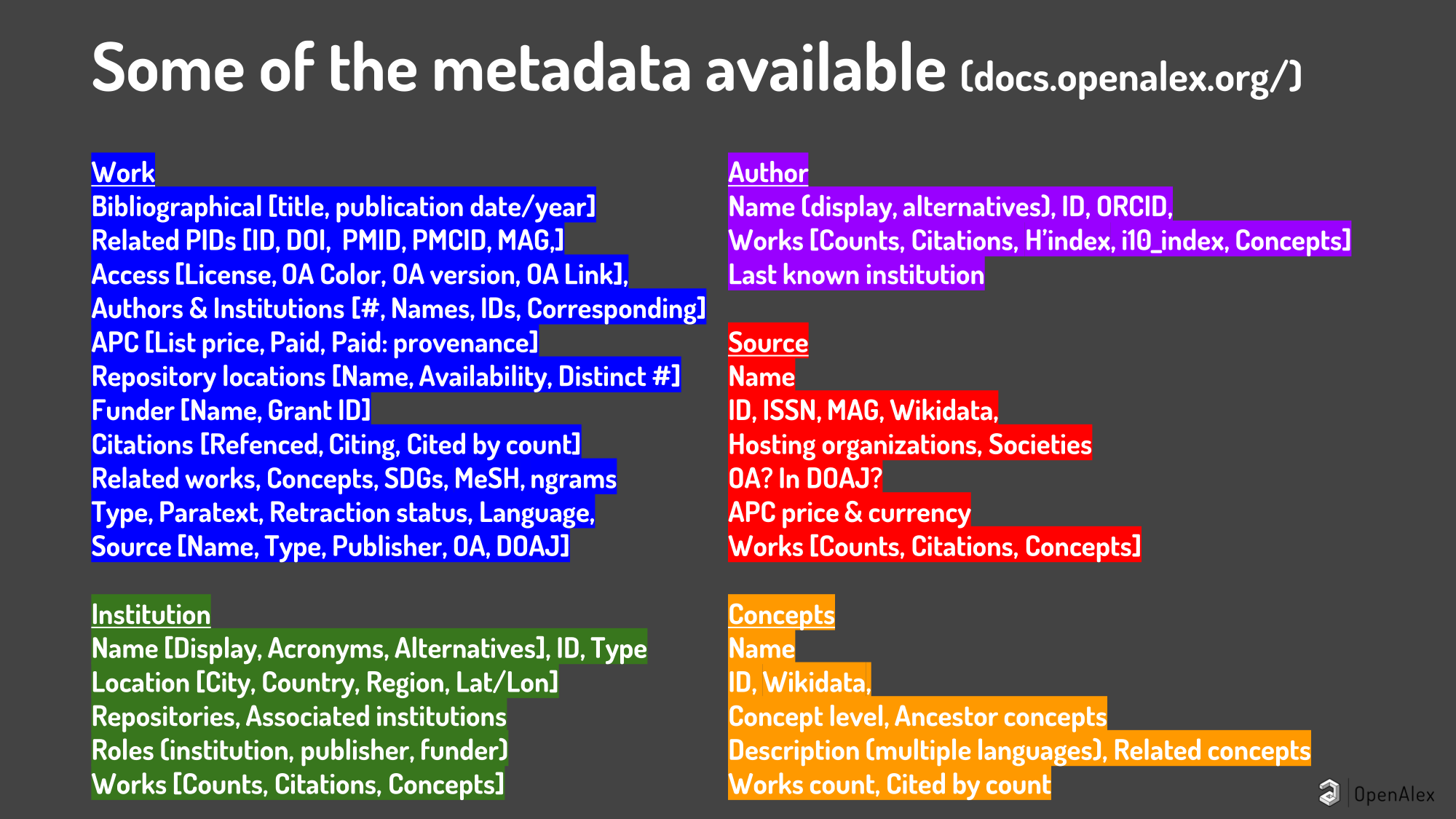
Search on OpenAlex
Structure of the search equation:
(key1 OR key2) AND (key3 OR key4) AND (key5 OR key6)

Interface on OpenAlex
Type of search:
- Works
- Authors
- Sources
- Institutions
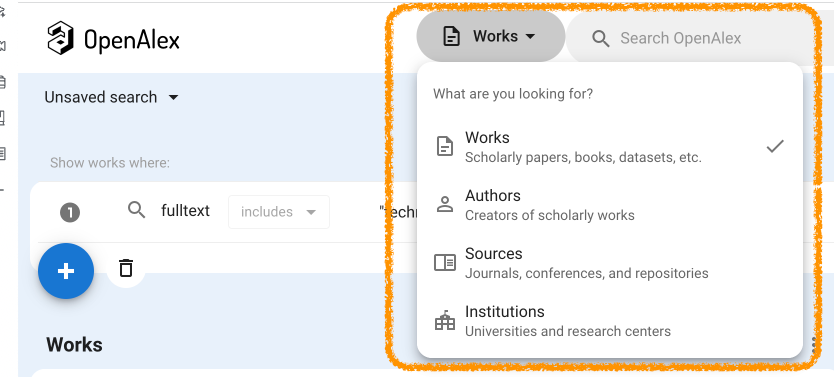
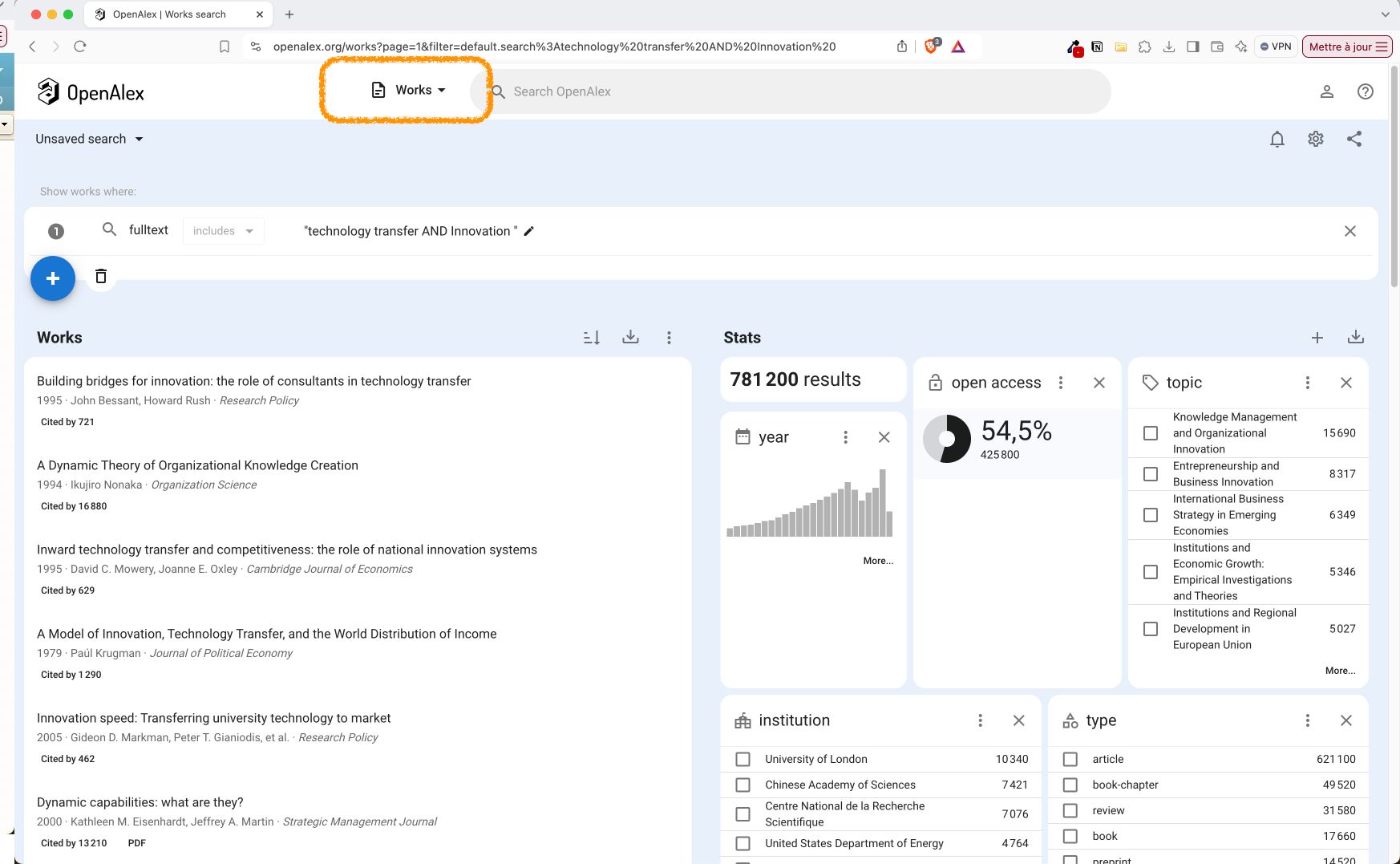
Filters on OpenAlex
- Filters are the basis of query-building and allow searching of entities, attributes, and text.
Currently 47 filters are available in the UI.

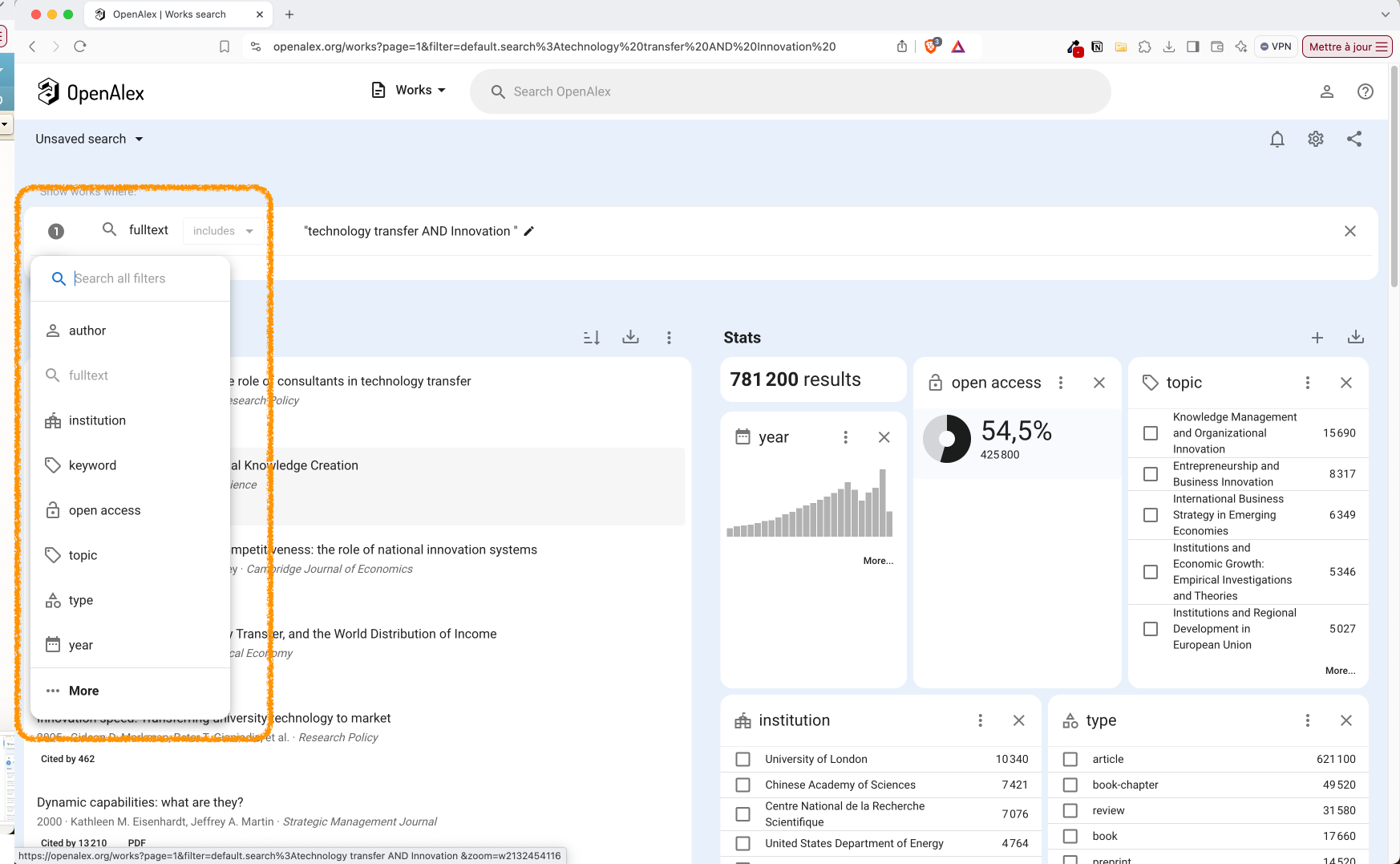
Works on OpenAlex
Each work can be identified

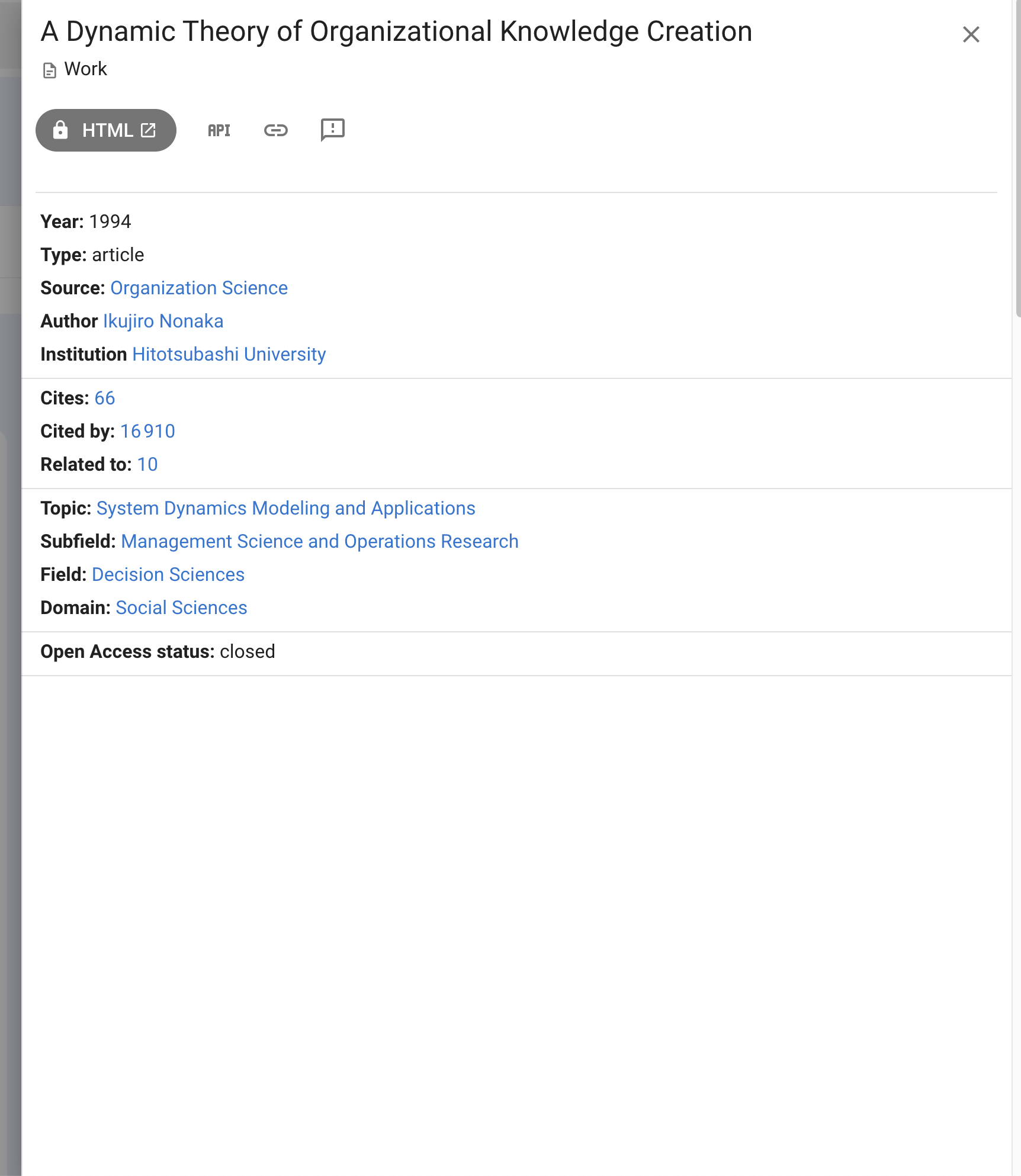
Connecting of OpenAlex
- Using the API
- Less than 50000!!
Source. OpenAlex YT Channel
Vosviewer
Scientific Network visualization
Small introduction to VosViewer
- Focus on visualization of scientometric networks
- Support for large number of data sources
- Text mining functionality
- Advanced visualization features
- Relatively easy to use
- Limited analysis options
- Developed at CWTS
Co-Authorship Analysis
Add data: from Bibliographic database file

Add data: from Bibliographic database file

Add data: Select the .txt files from WoS

Select: Co-Authorship
You can see the types of analysis. Use this ﹖icon to see the relatedness for each type of the analysis:
Select Co-Authorship
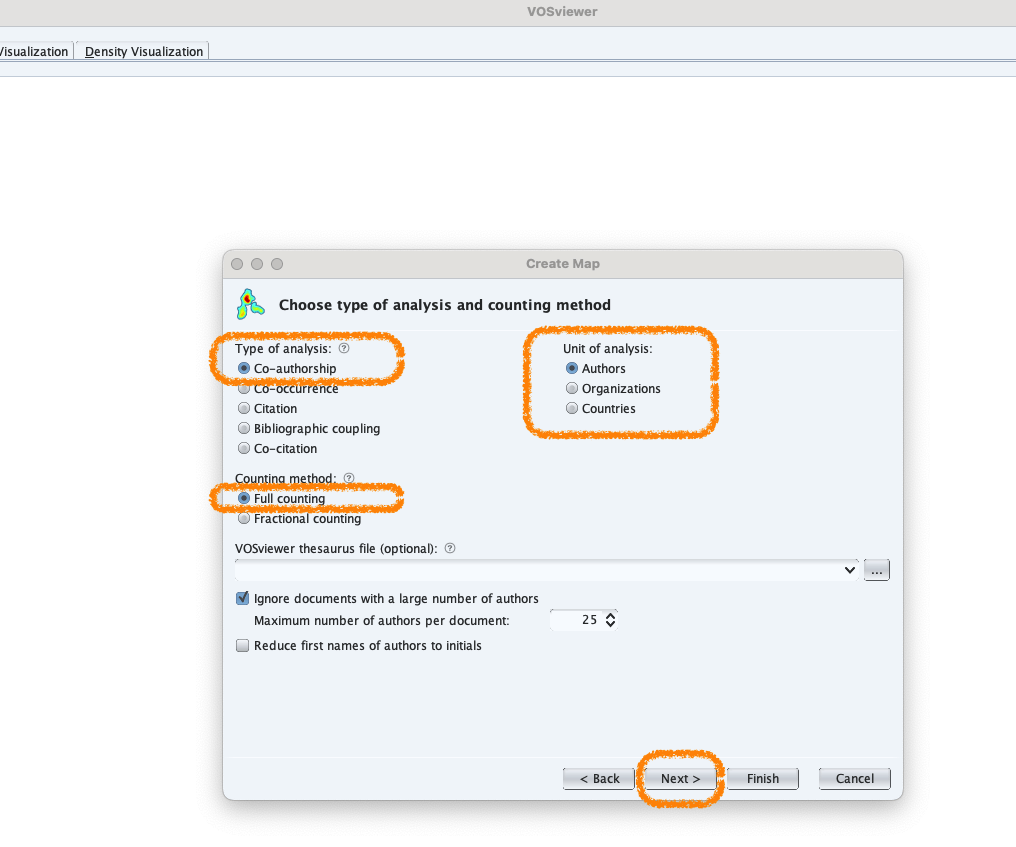
Select: Thresholds
In fonction of the type of ‘Co-Authorship analysis’ (Authors, Organizations, Countries), different type of threholds are proposed:
Authors
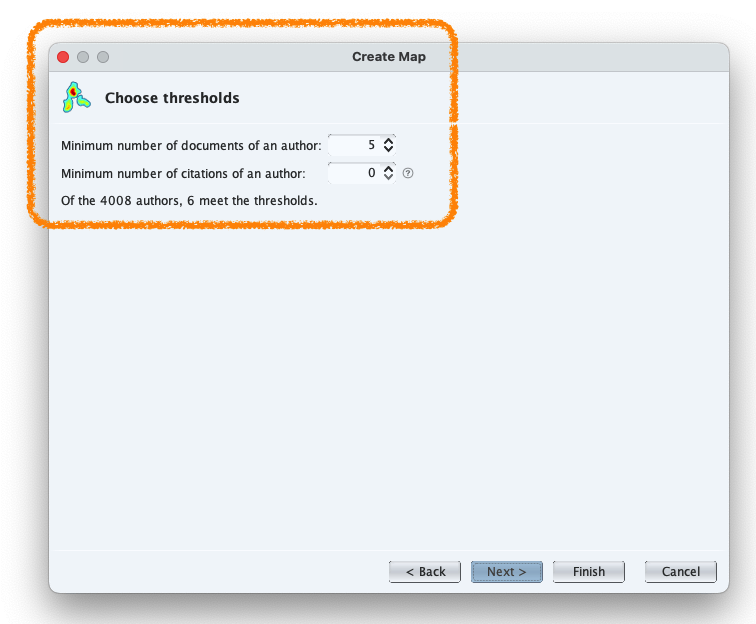
Organizations
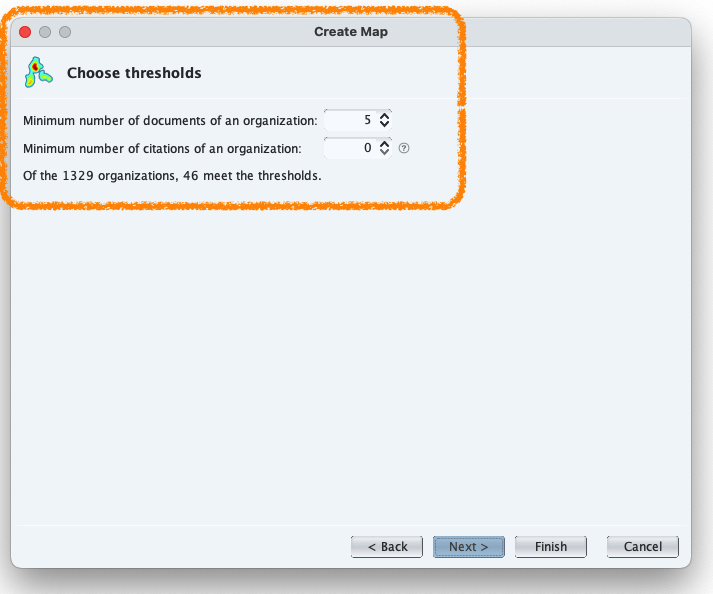
Countries

Co-Occurence of Keywords
Add data: Minimum number of Occurrencies for Keyworkds

Add data: Keywords to be plotted

Add data: Verify if Keywords are correct
Attention to the Redundancies

Network Visualitation

Overlay Visualitation

Overlay Visualitation: Selecting the node
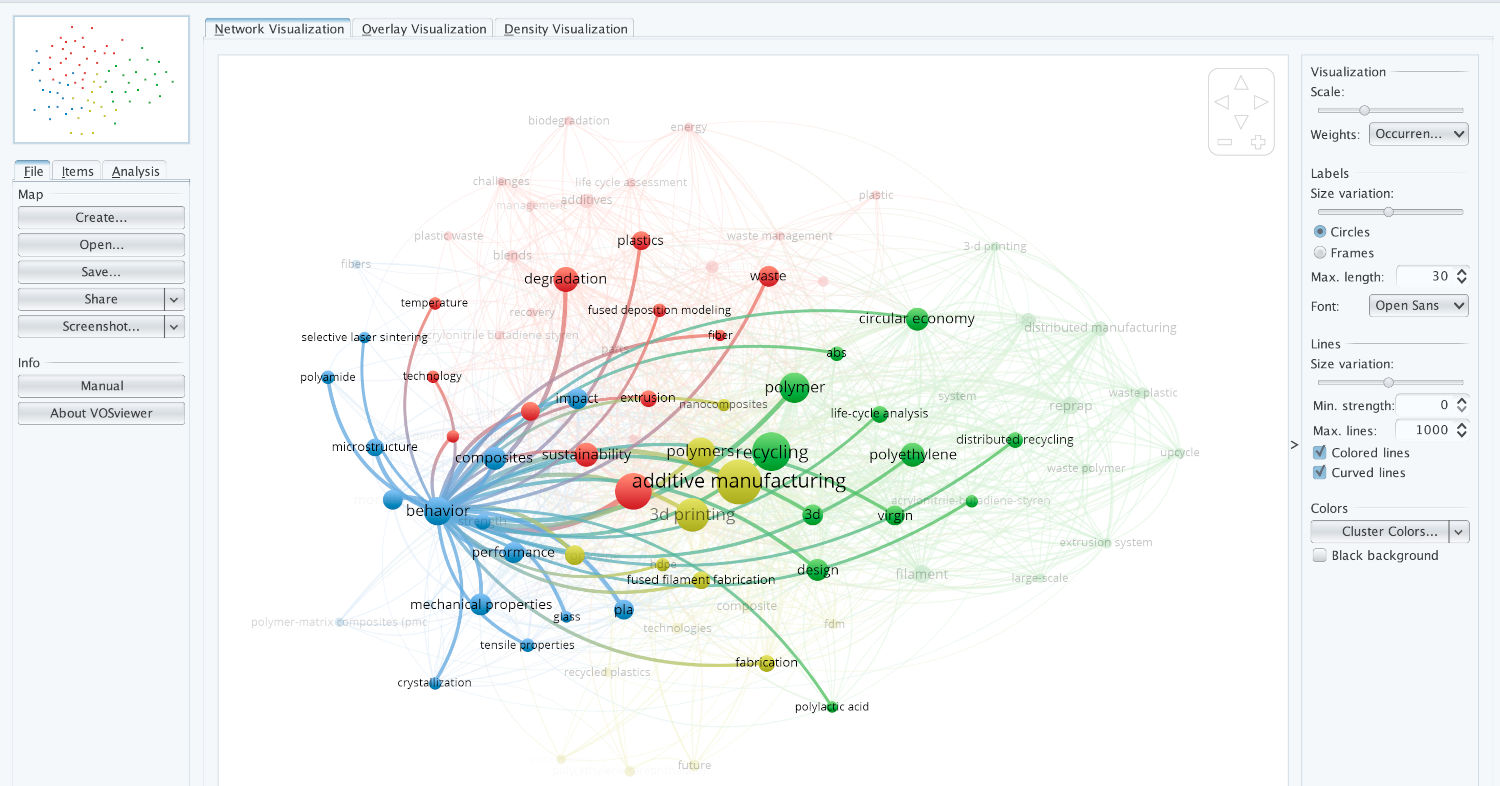
Density Visualization

Patents Network visualization
Clarivate for Patents
ENT UL > Ressources en Ligne
Derwent Innovation Index

Clarivate for Patents: use the search equation

Clarivate for Patents: Export the Data

Clarivate for Patents: Full record

Don’t forget use the analyze tool for Patents
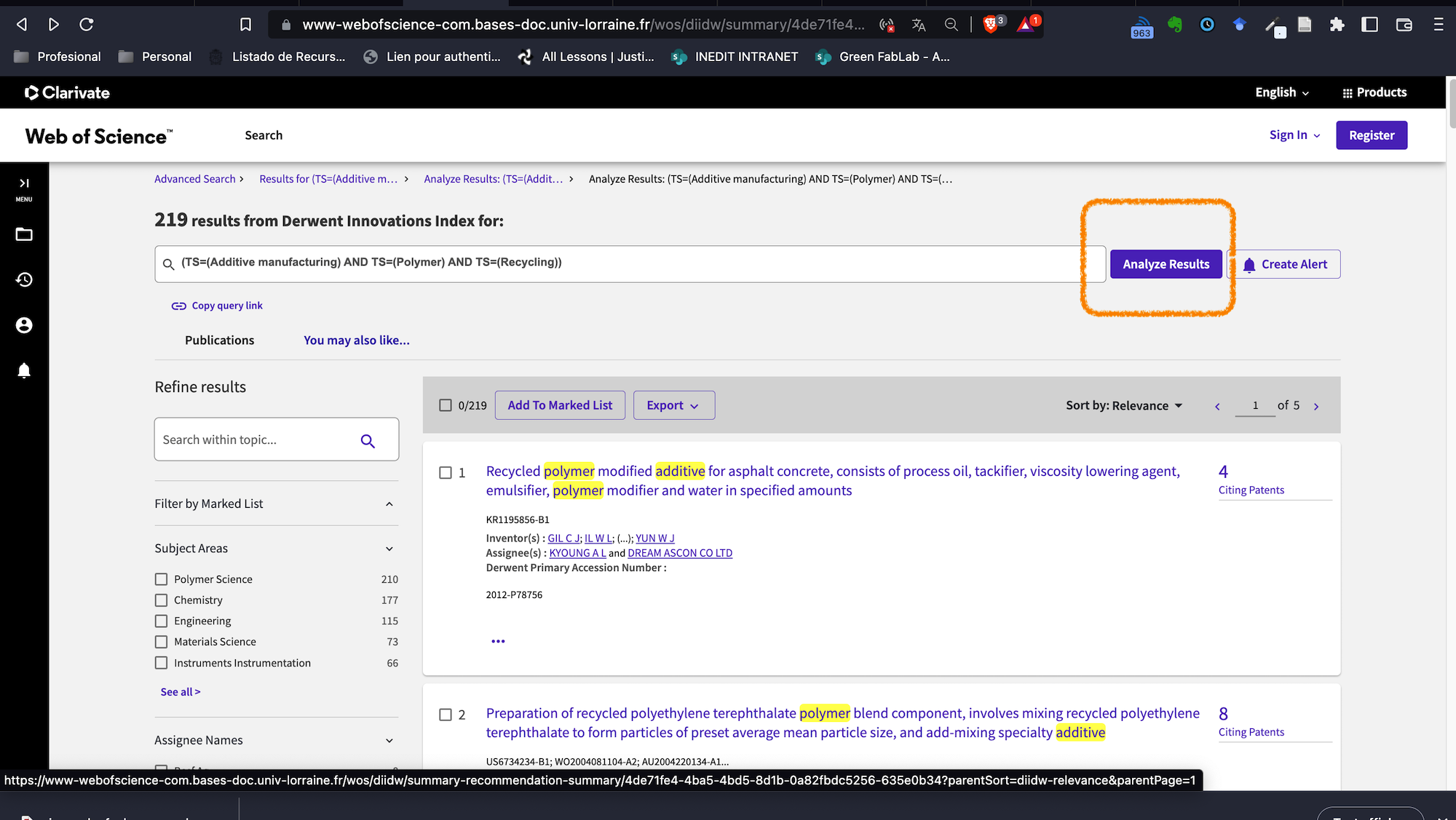
VOSviewer for Patents: Create from text data.

VOSviewer for Patents

VOSviewer for Patents

VOSviewer for Patents

VOSviewer for Patents

VOSviewer for Patents

VOSviewer for Patents

VOSviewer for Patents

VOSviewer for Patents

VOSviewer for Patents

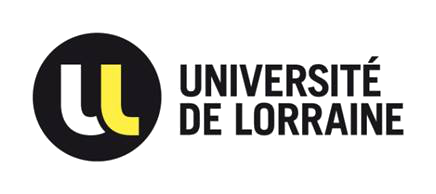
TD 1: Vosviewer

Introduction to Scientific Research
